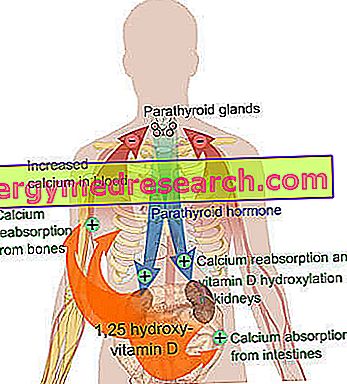Generality
Trichomonas vaginalis is the name of a flagellate protozoan, typical of the female reproductive tract and responsible for one of the most widespread sexually transmitted diseases in the world, trichomoniasis .

Indeed, trichomonas tend to raise vaginal pH, destroying the "good" lactobacilli that protect the internal environment from infections. By decreasing the natural acidity of this delicate area of the female body, trichomonas allows other microorganisms to take root more easily.
Contagion and Epidemiology
Contagion almost always occurs through sexual transmission, although in recent years there has been a noticeable increase in cases in which trichomonas are transmitted through contact with towels or underwear.
The human species is the only natural host of trichomonas and the transmission, as well as through sexual contact, can also take place during the passage of the newborn in the birth canal.
In the external environment the trichomonas vaginalis survives only for a few hours and it is therefore possible, even if rare, the transmission through baths, underwear or infected towels (the trichomonas survives up to 30 minutes in warm water and for about a day on the cover). water).
Epidemiology
Trichomoniasis is one of the most common sexually transmitted diseases (STDs). Infection with trichomonas is in fact widespread in all continents and in all climates. The incidence is about 170 million cases a year and, like many other STIs, it can promote HIV transmission (causing a local accumulation of macrophages and lymphocytes).
The disease is typical of the fertile age and very rarely affects before the menarche or after menopause.
Trichomoniasis symptoms
To learn more: Trichomoniasis symptoms
Signs and symptoms almost never allow a certain clinical diagnosis of trichomoniasis. However, in women, some signs such as the strong local itching, the presence of abnormal secretions (foamy, yellowish and smelly losses), associated or not with pain during urination or sexual relations, may point towards a possible infection with trichomonas.
Variability of symptoms was observed in the different phases of the menstrual cycle and an exacerbation of symptoms during menstruation.
In humans the majority of infections are asymptomatic and self-limiting; however, trichomonas can cause urethritis and prostatitis, which manifest themselves in the form of small leaks and pain when urinating.
Diagnosis
The diagnosis is made by looking in the laboratory for the presence of the protozoan (trichomonas) on samples of vaginal exudate in the woman or of urethral exudate or sperm in humans.
Given that often, if not treated promptly, trichomoniasis evolves from an acute to chronic-relapsing form, characterized by the alternation of asymptomatic and acute or subacute phases, it is very important to consult a doctor at the onset of the symptoms listed above.
Prevention
Avoid sexual intercourse with people at risk or at least use precautions.
Also pay attention to the use of towels in hotels, especially when they come into contact with the private parts.
Care
To learn more: Drugs for the treatment of Trichomoniasis
The most active drugs in fighting trichomonas infection are nitroimidazoles which, when administered orally, are concentrated at the urogenital level where they perform their action. Their effectiveness is very good, but a reliable diagnosis and early treatment is very important.
It is of fundamental importance that the treatment is also extended to the partner, both in the presence and in the absence of symptoms. Until the end of drug therapy it is necessary to abstain from sexual intercourse.
Drugs for the treatment of Trichomoniasis "



